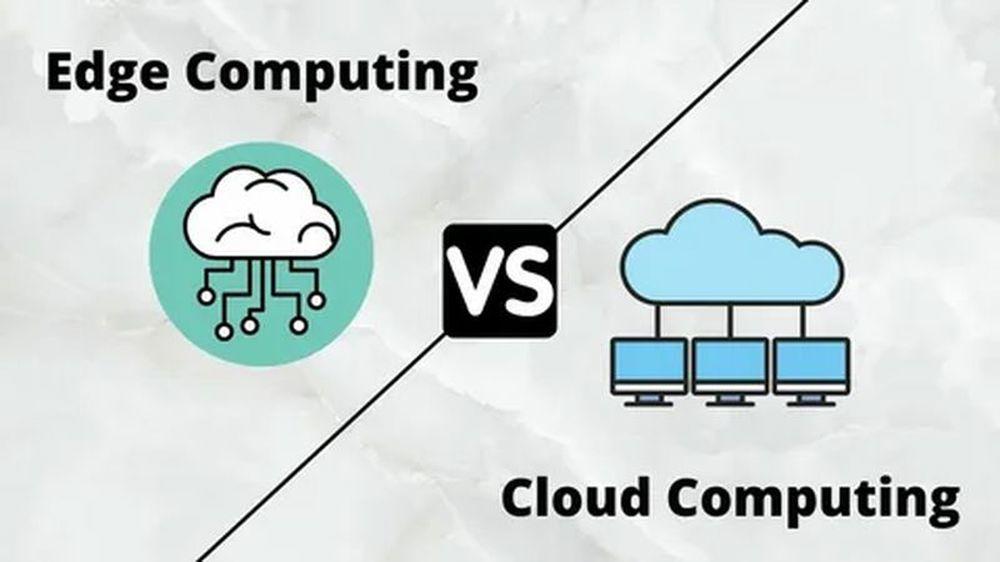Edge Computing and Cloud Computing are crucial in shaping how we use technology, but they work in fundamentally different ways. Cloud computing has been the dominant force in data storage, processing, and service delivery. Still, edge computing is quickly gaining ground, especially in scenarios requiring real-time data processing and low latency.
According to the Nvidia blog, these hybrid public-private clouds offer unprecedented flexibility, value, and security for enterprise computing applications.
This article will explain the differences, benefits, and use cases between edge computing and cloud computing, helping you understand which one is right for your needs.
What Is Edge Computing?
Edge computing refers to the practice of processing data closer to its source—usually on the device or at a nearby location. Instead of sending all data to a centralized data center for processing, edge computing allows for faster, more efficient data processing at the “edge” of the network, closer to where the data is generated.
This reduces the amount of data that needs to travel over the internet, thus minimizing latency and bandwidth usage.
Key Benefits of Edge Computing
- Low Latency: Edge computing ensures that responses are delivered in real-time or with minimal delay by processing data closer to the source.
- Reduced Bandwidth Use: Since data doesn’t need to travel to a distant cloud server, it saves on bandwidth costs.
- Enhanced Privacy: Sensitive data can be processed locally, reducing the risk of exposure during transmission.
What Is Cloud Computing?
On the other hand, cloud computing involves storing and processing data on remote servers (data centers) that are accessible via the Internet. It allows users to access computing resources like storage, processing power, and software applications without owning physical hardware.
Cloud services are typically provided by large companies such as Amazon Web Services (AWS), Microsoft Azure, or Google Cloud.
Key Benefits of Cloud Computing
- Scalability: Cloud services offer virtually unlimited resources, so you can scale up or down depending on your needs.
Google Cloud states that cloud computing gives your business more flexibility. You can quickly scale resources and storage up to meet business demands without investing in physical infrastructure.
- Cost-Efficiency: Since users only pay for their resources, cloud computing can be a cost-effective solution for businesses of all sizes.
- Accessibility: Data stored in the cloud can be accessed from anywhere with an internet connection, enabling global collaboration and remote work.
Key Differences Between Edge Computing and Cloud Computing
While edge computing and cloud computing are used for processing and storing data, they each have distinct characteristics that make them more suitable for different applications.
| Cloud Computing | Edge Computing |
| Cloud computing is centralized servers stored in faraway, large-scale data centers. | On the other hand, it is a globally dispersed computer infrastructure that is nearer to the devices and consumers. |
| It uses a central cloud server located remotely from the data sources to process data. | Analyze data in real time and process it fast on-site. Data storage is not its primary concern. |
| It works well for non-time-sensitive applications. | When latency is low and every millisecond matters, it is perfect. |
| Cloud computing provides more creative and enhanced processing and storage capability. | Its processing power and storage capacity decrease as it moves through the gadget. |
| It is suitable for in-depth and long-term analysis. | It works better for quick and in-the-moment analysis. |
-
Location of Data Processing
- Edge Computing: Data is processed closer to where it is generated, often on local devices or nearby servers.
- Cloud Computing: Data is sent to remote data centers, often located far from the source.
-
Latency
- Edge Computing: Extremely low latency due to processing happening near the data source.
- Cloud Computing: Higher latency as data must travel over the internet to reach a centralized data center.
-
Data Transfer and Bandwidth
- Edge Computing: Minimizes the amount of data sent over the internet, reducing bandwidth costs and congestion.
- Cloud Computing: Requires more bandwidth, as large amounts of data are transferred to and from the cloud.
-
Scalability
- Edge Computing: More limited scalability due to hardware constraints at the edge.
- Cloud Computing: Highly scalable, allowing businesses to scale resources as needed.
When to Choose Edge Computing
Edge computing is ideal for situations where low latency and real-time data processing are critical. Here are some examples:
- Industrial IoT: Manufacturing facilities use it for real-time monitoring of equipment and production lines to prevent downtime.
- Autonomous Vehicles: Self-driving cars need to process sensor data almost instantly to make driving decisions.
- Smart Homes: Devices like thermostats, lights, and security cameras benefit from edge computing for fast responsiveness.
When to Choose Cloud Computing
Cloud computing shines in applications that require scalable resources, central management, and remote access to data. Here are some scenarios where cloud computing is the best choice:
- Data Storage and Backup: Cloud computing offers almost unlimited storage capacity for data that doesn’t need to be processed in real-time.
- Software Services: Cloud-hosted applications like email, collaboration tools, and business management software benefit from centralized control and easy access.
- Big Data Analytics: Cloud computing can handle the vast amounts of data generated in industries like healthcare, retail, and finance, where data storage and computing power are necessary.
Conclusion
Edge computing and cloud computing each offer unique advantages depending on your needs. If real-time data processing with minimal delay is essential, edge computing may be the way to go. However, cloud computing is the ideal choice if scalability, centralized management, and large-scale data storage are more important.
Understanding the strengths and limitations of each approach will help you make the right choice for your specific needs.
Whether you’re managing IoT devices, running a global business, or implementing smart technologies, both edge and cloud computing have crucial roles to play in the digital landscape.
Must Read: 8 Reasons Why Edge Computing is the Future of Data Processing



